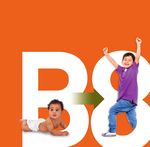The Research Base for a Birth through Age Eight State Policy Framework
←
→
Page content transcription
If your browser does not render page correctly, please read the page content below
Kathryn Tout
Tamara Halle
Sarah Daily
Ladia Albertson-Junkans
The Research Base for a
Shannon Moodie
Birth through Age Eight
State Policy FrameworkThe Research Base for a
Birth through Age Eight
State Policy Framework
2 OVERVIEW
3 POLICY AREAS:
HEALTH, FAMILY SUPPORT, AND LEARNING
4 HEALTH
Health Policy Choices
The Research Base for Health Policy Choices
10 FAMILY SUPPORT
Family Support Policy Choices
The Research Base for Family Support Policy Choices
21 LEARNING
Learning Policy Choices
The Research Base for Learning Policy Choices
36 POLICY FOUNDATIONS: ACKNOWLEDGEMENTS:
STANDARDS, SCREENING AND ASSESSMENT,
AND ACCOUNTABILITY SYSTEMS The policy framework was developed
36 STANDARDS
by the Alliance for Early Success.
Standards Policy Choices
The Research Base for Standards Policy Choices
42 Child Trends gratefully acknowledges
SCREENING AND ASSESSMENT
Screening and Assessment Policy Choices
the contributions by Lisa Klein,
The Research Base for Screening
and Assessment Policy Choices
49 ACCOUNTABILITY SYSTEMS Helene Stebbins, and Steffanie Clothier.
Accountability Systems Policy Choices
The Research Base for Accountability Systems
Policy Choices
53 CONCLUSION
54 REFERENCES
© Child Trends 2013
Publication #2013-42
May be reprinted with citation.2
The Research Base for a Birth through Age Eight State Policy Framework
The Research Base for a
Birth through Age Eight
State Policy Framework
OVERVIEW
Early experiences in childhood lay the foundation for later success. The relationships,
environments, and supports that children experience have a profound impact on their
development because critical neurological and biological systems grow most rapidly
in these earliest years. Throughout early childhood, from birth through age eight,
children need early, consistent, high-quality supports to promote and sustain their
developmental gains.
State policies can help build a strong foundation that puts young children, particularly
vulnerablei young children, on a path to success. The Alliance for Early Success
developed the Birth Through Age Eight State Policy Framework as a tool, or roadmap,
that can inform decision-making and guide policy choices. It focuses attention on what
is critical within and across different aspects of early childhood development to address
the physical, social, and cognitive needs of young children within various contexts.
The framework is the collective work of more than 150 experts, including leaders in
the fields of early childhood and K-12 education, advocates, researchers, policymakers,
and foundation officers. Building on decades of research and theory identifying the
essential supports for children’s development, the framework emphasizes health, family
support, and learning as critical policy areas, and standards, assessment practices,
and accountability systems as critical foundations to implement the policies.
i “Vulnerable” is defined as having one or more of the following risk factors, which increase the
likelihood of poor health, learning, and economic outcomes: poverty, low parental education,
single or teenage parent, homelessness, and/or high residential mobility.3
The Research Base for a Birth through Age Eight State Policy Framework
This report, The Research Base for a Birth through Age Eight State Policy Framework,ii
and the accompanying Research at a Glance: The Research Base for a Birth through
Age Eight State Policy Framework are compendium to the framework that emphasizes
three important messages:
1. There is an evidence base for the policy areas and policy foundations identified
in the Birth through Age Eight State Policy Framework;
2. The years starting at birth and continuing through age eight are a critical time
for achieving good health, strong families, and better learning outcomes in early
childhood and later in life; and
3. The supports and experiences that children receive have a cumulative effect—each
experience influences the next and sustains previous growth and development.
What follows is the evidence base for the framework, providing the research for the
factors that contribute to and sustain the healthy growth and development of young
children. This report is organized into two sections, one presents the health, family
support, and learning policies areas. The other presents the standards, screening and
assessment practices and accountability system policy foundations. An overview of
each policy area and foundation is followed by a list of relevant policy choices and
the research base for each.
POLICY AREAS:
HEALTH, FAMILY SUPPORT, AND LEARNING
The Birth through Age Eight State Policy Framework is informed by developmental
science theory and research, which asserts that “development” is a dynamic, interactive
process that is not predetermined, but occurs in the context of relationships,
experiences and environments. Children interact with their world in dynamic and active
ways, thereby actively shaping their own development with their unique characteristics,
interests and needs. Children’s developmental trajectories are created over time
through these transactions with their world. Patterns of interacting with the world are
built on the experiences children have, and each experience influences the next. The
period of birth through age eight is a critical period for this dynamic interplay between
individual growth and the contexts of development—which can include the internal,
biological context of the child as well as the home, school, and community contexts;
the cultural context; and even the local, state or national policy context. Supporting
ii See also Research at a Glance: The Research Base for a Birth through Age Eight State Policy
Framework, which is an abbreviated version of The Research Base for a Birth through Age Eight
State Policy Framework. Available here: http://earlysuccess.org/sites/default/files/website_files/
files/ChT-Alliance%20R%20at%20a%20Glance%20v9%20wactive%20links.pdf4
The Research Base for a Birth through Age Eight State Policy Framework
children’s growth and well-being within and across these important contexts during
early childhood can ultimately lead to good health, strong families, and better learning
outcomes that predict long-term health, high school graduation, and sustained success
over time.1 Developmental research indicates that targeted policies in health, family
support, and learning during the critical years spanning birth through age eight can
make a difference in children’s life trajectories.
HEALTH
The first eight years of life are characterized by a series
of critical periods during which development is particularly
sensitive to experiences that are largely influenced by
children’s health and well-being. The development that
occurs within these sensitive periods is often hardwired,
and becomes the foundation for all subsequent
development. In this way, health in the first eight years of
life has significant cumulative and sustained effects on
child and adult outcomes. For example, poor health in utero may lead to poor birth
2
outcomes3 that further increase risk for poor health in early childhood. Young children
who experience toxic stress as a result of significant adversity are, in turn, at higher risk
for serious conditions in adulthood such as obesity and cardiovascular disease4—many
of which have negative economic and societal consequences.
Poor health early in life compromises subsequent development. Prolonged and elevated
stress from adverse experiences early in life such as violence or abuse causes changes in
neural circuitry and chemical composition in the brain, which make children less resilient
over time.5 This reduced adaptability undercuts the developmental benefits of positive
experiences and puts children at risk for physical and mental illness later in life.6
However, as developmental science asserts, development is not predetermined or
necessarily linear, but occurs through a dynamic interplay between the individual
and the environments and relationships in which each child engages. Health risks
experienced early in life do not necessarily lead to poor health in adulthood, unless
there are consistent and cumulative experiences that contribute to such a trajectory.7
For example, Latino infants of Mexican heritage experience positive birth outcomes
such as robust birthweight and low infant mortality rates despite many of these children
coming from disadvantaged backgrounds (e.g., low maternal education, low household
income). Nevertheless, one study found that Latino children have lower cognitive growth in
early childhood compared to their white peers, even after controlling for socioeconomic
differences between the groups.8 Thus, early protective factors related to health do5
The Research Base for a Birth through Age Eight State Policy Framework
not necessarily predict improved outcomes across developmental domains or for all
children, nor do early health risks always predict poor outcomes across domains or
for all children.
However, early health and economic risks can constrain the subsequent experiences
children have. Children with poor nutrition and chronic illness are more likely to miss
school, and therefore miss out on important social and academic opportunities.9
This is especially true for uninsured children, who are less likely to receive preventive
care, needed services, and screenings that allow for the early identification and
effective management of health concerns.10 Uninsured children living in poverty
disproportionately suffer from lack of access to health care, particularly because poor
children are less likely to be in excellent physical and oral health.11 Moreover, low-income
children stand to benefit the most from high-quality developmental opportunities
available to them12—opportunities that are made possible largely by keeping children
healthy and minimizing health risks as much as possible.
Policies that promote the health of all children—and particularly of vulnerable children—
will enable these critical opportunities for development to be maximized and ensure
that a strong foundation is set for all future development across the lifespan.
Health Policy Choices
Timely and ongoing prenatal, pediatric, and oral health care;13
Access to affordable health insurance for children and families;14
Partnerships to coordinate the identification and delivery of health care services
with early learning programs;15
Community-based programs targeting sources of toxic stress such as violence,
crime, substance abuse, and mental illness, combined with supports for parents
and caregivers who need them;16 and
Maximize participation of families, providers, schools and communities in federal
nutrition and assistance programs.17
The Research Base for Health Policy Choices
Timely and ongoing prenatal, pediatric, and oral health care
The U.S. ranks poorly among industrialized nations worldwide in both infant18 and
child mortality19—the former defined as the number of deaths within a full year of birth
per 1,000 live births, and the latter as the number of deaths among children under6
The Research Base for a Birth through Age Eight State Policy Framework
5 per 1,000 live births. Both infant and child mortality are predictors of child well-being
within a nation, which is further regarded as an indicator of societal prosperity
and development.
Prenatal care is a primary strategy for promoting the delivery of a healthy baby,
and assuring that children have the greatest chance at having a healthy start in life.
Common goals of prenatal care are to target the causes of low birth weight, minimize
and preempt complications during pregnancy, and address predictors of Sudden
Infant Death Syndrome (SIDS)—all of which are leading causes of infant mortality and
morbidity in the U.S.—through a combination of psychosocial and behavioral, nutritional,
and medical interventions.20 Psychosocial and behavioral interventions have primarily
focused on reducing maternal smoking, a leading cause of low birth weight and risk
factor for SIDS. Evidence suggests that prenatal care can decrease maternal smoking in
some demographic groups (e.g., black women living in urban areas) and may have the
most positive effects on birth outcomes when provided early in pregnancy (rather than
later).21 Initiating prenatal care early can also reduce the likelihood of SIDS.22 Nutritional
interventions and counseling, such as folate supplementation during pregnancy, have
also been found to reduce the incidence of low birth weight and decrease the risk of
other poor pregnancy outcomes, such as neural tube defects.23 The benefits of proper
prenatal nutrition can extend into childhood and adulthood. For example, nutritional
deficits in utero have been linked to serious cardiovascular disease in adulthood.24
In addition, advancements in medical technology have facilitated improvements in
monitoring fetal and maternal health and development and have dramatically improved
the ability to detect risk factors such as hypertension, high blood pressure and excess
weight gain.25 Consistent and timely prenatal care allows these tools to be effective in
identifying concerns and intervening early to preempt potential complications, such as
gestational diabetes and eclampsia.
After birth, timely and ongoing pediatric physical and dental care is essential to
maintaining and ensuring good health throughout the first eight years of life. This
is especially true for children from low-income families, who are less likely to be in
excellent or very good health compared to children from higher income families.26
Regular pediatric care is important for assessing and monitoring children’s health status
over time, staying up-to-date on immunizations, and identifying and addressing any
threats to development as early as possible.27 Children with a usual source of pediatric
care are less likely to have unmet health needs28 and more likely to receive preventive
services, such as immunizations.29 Referrals are another important component of regular
pediatric care, and are particularly integral to accessing dental services.30 Dental caries—
or, tooth decay—is the most common chronic childhood disease,31 affecting 11 percent7
The Research Base for a Birth through Age Eight State Policy Framework
of 1- to 5-year-olds and over 25 percent of 6- to 11-year-olds annually.32 It is also one
of the greatest unmet needs of children under eight, with low-income children having
disproportionately higher rates of untreated tooth decay.33 Untreated dental problems
can lead to secondary physical illness, delay overall development, compromise school
attendance and performance, and interfere with psycho-social functioning.34 Many
childhood dental diseases, along with their negative consequences, can be prevented
by providing early and comprehensive dental services to children;35 pediatricians are
uniquely situated to facilitate access to needed dental care.
Access to affordable health insurance for children and families
Continuous and adequate health insurance coverage is critical to ensuring access to
prenatal care and other preventive and routine services that minimize health risks.
Women with health insurance are more likely to receive timely prenatal care than their
uninsured or under-insured counterparts.36 Insurance also helps children gain access to
preventive and needed services. In early childhood, insurance coverage ensures access
to well-child visits and immunizations, and is associated with decreases in the number
of emergency room visits.37 Continuous insurance coverage is associated with a greater
likelihood of having a usual source of care, which in turn assures greater continuity
of care, greater access to routine, preventive, and needed services, and fewer delays
in needed care. Furthermore, children are less likely to have unmet health care needs
when continuously and adequately insured, and families are more likely to report higher
quality and satisfaction with care.38 This is particularly important because illness in the
early years disrupts participation in early learning programs that offer opportunities
for social and cognitive development, and can cause employed parents to miss days at
work.39 In addition, persistent health disruptions, such as chronic respiratory illness, early
in life have been linked to serious diseases in adulthood, such as lung disease.40
Partnerships to coordinate the identification and delivery
of health care services with early learning programs
Coordinating the identification and delivery of health care services with early learning
programs is a viable way to ensure timely and adequate receipt of comprehensive
care for both insured and uninsured children. Head Start is an example of an effective
national model for increasing low-income children’s access to services by delivering
educational and health supports and services under one roof to comprehensively
address the myriad factors affecting children’s well-being. Statewide initiatives such8
The Research Base for a Birth through Age Eight State Policy Framework
as Michigan’s Great Start Collaborative, North Carolina’s Smart Start, or South Carolina’s
First Steps also support individual communities in increasing the coordination of
health-related services and family supports through early learning programs.
School-based health centers (SBHCs) adopt a similar approach and coordinate care
in early childhood and primary education settings. As with Head Start, these systems
have been found effective in reducing nonfinancial barriers to health care.41 Whereas
Head Start focuses on low-income children, the benefits of school-based models can
span across socio-economic strata. Evidence suggests that, irrespective of insurance
coverage or status, children (ages 3-14 years) with access to a SBHC more easily receive
immunizations, physical examinations, and treatment for illnesses and injuries. They are
less likely to use the emergency department, and more likely to have visited a physician
and a dentist within the year. Families whose children utilize a SBHC tend to report
higher levels of satisfaction with care compared to families using community or hospital
clinics.42 Delivering health care services, such as vaccinations, in an educational setting
can also have a profound effect on the student body as a whole. For example, children
attending schools where vaccines were administered on-site reported far fewer flu-
related symptoms compared to children at schools without a vaccination program.43
With respect to mental health services, school-based interventions have been found
effective in addressing a wide variety of emotional and behavioral issues, although few
target specific clinical disorders.44 Including mental health services in the continuum of
care provided in education settings can mitigate comorbidities (i.e., the simultaneous
presence of to diseases or conditions such as Oppositional Defiant Disorder (ODD)
and depression)45 and other negative effects on learning.46
Community-based programs targeting sources of toxic stress such as violence,
crime, substance abuse, and mental illness, combined with supports for parents
and caregivers who need them
Toxic stress can have profound and lasting effects on health and development, with
consequences that can extend well into adulthood. It results from repeated or prolonged
exposure to trauma—such as violence, abuse, or untreated parental mental illness—
that triggers an exaggerated stress response.47 Given the brain and body’s sensitivity
to experience during the first eight years of life, changes at the chemical level due to
adverse experiences can result in potentially permanent alterations in brain architecture
and function.48 These deep biologic changes can manifest behaviorally as maladaptive
coping styles that disrupt learning, limit the capacity for resilience over time, and
increase risk of adult mental illness. In addition, persistent elevated stress responses
can compromise immune function, which further increases risk for an array of poor9
The Research Base for a Birth through Age Eight State Policy Framework
health outcomes later in life, including cardiovascular disease, chronic respiratory
conditions, and even autoimmune disorders.49 A community approach to addressing
toxic stress that supports children’s families is particularly important because caregivers
can significantly buffer children’s exposure and reaction to toxic stress.50 Moreover,
toxic stress—by definition—results from exposure to adversity in the absence of quality
relationships with caregivers. In its official position statement, the American Academy
of Pediatrics explicitly identifies caregivers and communities as integral components
of any successful framework for policies and programs targeting toxic stress that
affects young children.51
Maximize participation of families, providers, schools and communities
in federal nutrition and assistance programs
Food insecurity presents another threat to children’s health and well-being that can
be effectively averted through evidence-based public programming. The short-,
intermediary-, and long-term effects of inconsistent and/or inadequate access to
nutritious food in childhood are well-documented; they include delays in development
and stunted growth, physical impairments due to nutritional deficiencies, behavioral
and psycho-social problems along with disruptions in learning, and lower academic
performance in primary school.52 A number of public programs, such as the Child and
Adult Care Food Program (CACFP); Supplemental Nutrition Assistance Program (SNAP);
Women, Infants and Children Program (WIC); and the National School Lunch Program
(NSLP), already exist that can effectively increase children and families’ access to
nutritious and sufficient food.53 Across the 15 nutrition assistance programs comprising
the food safety net, federal dietary guidelines inform state programming that local
programs implement to meet children’s nutritional needs during critical times of physical
and cognitive development. Together, they target the causes of child health threats such
as food insecurity, childhood obesity, and poor bone health across a variety of settings.54
For example, CACFP provides adequate and nutritious meals and snacks annually to
over three million low-income children—most of whom are under age 6—in early child
care settings.55 Nevertheless, complicated or unclear eligibility criteria, lack of awareness,
and social stigma56 leave a sizable portion of U.S. families at risk for food insecurity
every year. These families could be more effectively targeted for programming through
improvements in marketing and the recruitment and application processes.57 Special
consideration of the broad range of cultural and attitudinal factors that are known to
impact participation in public nutrition programs could particularly help in targeting
eligible families with historically lower rates of service utilization.5810
The Research Base for a Birth through Age Eight State Policy Framework
FAMILY SUPPORT
Families play the most important role in a young child’s
life. Even before a child is born, families set the stage for
their development, which begins with adequate prenatal
care and a healthy pregnancy.59 Families also work to
ensure that their young children receive adequate food,
shelter, and medical attention60 and that children live
in safe and stimulating environments in which they can
explore and learn.61 As children develop their skills and
abilities through their relationships with those around them,62 the opportunity to form
secure attachments with sensitive, nurturing parents (or other primary caregivers) is
critical to both their cognitive and social-emotional growth.63 A lack of a warm, positive
relationship with parents/caregivers increases the risk that children develop major
behavioral and emotional problems, including substance abuse, antisocial behavior,
and juvenile delinquency.64
Factors such as poverty, low education and family stress can compromise parent-child
relationship quality by limiting opportunities for stimulating and responsive interactions,
provision of emotional support, and exposure to activities that can enrich children’s
health, knowledge and skills.65 Family support programs and services are designed
to help families meet their needs and overcome stressors that can impair effective
parenting. While the specific goals of family support programs may vary, they typically
include increasing family engagement;66 parents’ knowledge of child development;67
improving parenting skills;68 providing work supports;69 helping families access health
and nutrition services, job training, or treatment for substance abuse;70 and reducing
parental stress.71 These goals are met through a variety of different activities such
as parent education classes and support groups, parent-child groups and family
activities, drop-in time, child care, information and referral services, crisis intervention
and/or family counseling, and auxiliary support services (such as emergency food).72
Such programs should be sensitive to the cultural and ethnic diversity of the target
populations they serve. For example, families of Mexican-heritage and Asian-heritage
background have different strengths and challenges than families from European-
American backgrounds.73 Overall, by helping families achieve self-sufficiency and
function more effectively, support programs enable families to provide a nurturing
environment that will foster the healthy development and school readiness of
young children.7411
The Research Base for a Birth through Age Eight State Policy Framework
Family Support Policy Choices
Voluntary, evidence-based,iii home visiting programs for new and expectant
families at risk for poor child outcomes;75
Parent education and parent-child interaction programs that are linguistically
and culturally appropriate and support development and nurturing of infants
and toddlers;
Access to child care assistance for eligible families with provisions for quality
and continuity of care;76
Effective outreach and enrollment in programs that promote family economic
stability and parent participation in higher education;77
Prevention programs and services for children at risk of abuse and neglect
and their families;
Family engagement policies starting with defining family engagement, establishing
benchmarks of success for targeted populations, and monitoring progress;78 and
Access to health care and education programs for children cared for
by grandparents and other relative caregivers.
The Research Base for Family Support Policy Choices
Voluntary, evidence-based, home visiting programs for new and expectant families
at risk for poor child outcomes
Home visiting is a longstanding intervention strategy offering parenting information,
guidance, risk assessment, and support at home for expectant and new parents. Home
visits are used to deliver a variety of services; however, most are aimed at improving
parents’ capacity and skills and children’s health and developmental outcomes.79
Home visiting models vary not only in purpose but also in structure, intensity, and
effectiveness. Home visitors may be professionals (such as nurses or social workers)
or trained community workers. The duration and frequency of services can also vary
considerably.80 Many programs begin during pregnancy or soon after the birth of a child,
while others do not begin interventions until some identified risk or significant event
triggers action (such as suspected child abuse, developmental delay, or special health
needs). Some efforts are intended to promote school readiness81 and are more likely
to serve preschool age children (rather than infants and toddlers).
iii Evidence-based programs or practices are approaches to prevention or treatment that are
validated by some form of documented scientific evidence (e.g., are reported with positive
effects in scientific journals). Programs and practices may also be deemed evidence-
based if they are based on a clear and logical theory of change or conceptual model, have
documentation of effective implementation, and experts in the field agree that the nature of
the evidence in support of the practice or program is consistent. See http://captus.samhsa.gov/
prevention-practice/defining-evidence-based/samhsa-criteria for more information.12
The Research Base for a Birth through Age Eight State Policy Framework
Recent comprehensive reviews have been conducted on home visiting evaluation
findings to identify patterns of outcomes and features of effective models. In general,
this research indicates that the characteristics of effective programs include:
interventions designed appropriately to fit family needs, home visitor qualifications
that align with program design, ongoing staff training and supervision, cultural
competency, family-centered approaches, and appropriate intensity and duration
through frequent home visits.82 Ongoing quality improvement has also been recognized
as essential by each of the major home visiting models.83 When programs are carefully
implemented, participation in home visiting has been linked to improved parenting
practices (such as increased sensitivity and reduced detachment), increases in maternal
education, and the creation of more stable and nurturing environments for children.84
Outcomes documented for children include increases in cognitive and social-emotional
competence and school readiness.85
In 2010, the Obama administration appropriated $1.5 billion over five years for a
state-based maternal, infant and early childhood home visitation grant program to
be administered through the U.S. Department of Health and Human Services (HHS)
as a new section of the Title V Maternal and Child Health (MCH) block grant program.
The Maternal, Infant and Early Childhood Home Visiting Program is intended to build
in every state a coordinated system of early childhood home visiting with the capacity
to provide the needed infrastructure and supports to ensure a high-quality, evidence-
based practice.86 At least 75 percent of federal funds used must go to programs using
national evidence-based models approved by HHS.iv Selecting an evidence-based model
offers several important advantages for state home visiting programs, including a track
record of effectiveness, accredited service quality, adherence to data-driven standards
and often the provision of technical assistance available from a national office.87
Although these features improve the likelihood that state-administered programs will
deliver quality services, selecting an evidence-based model alone is not a guarantee of
effectiveness. When considering home visiting models, it is also important to prioritize
strategies that ensure fidelity of implementation.
iv In February 2011, the U.S. Department of Health and Human Services (HHS) published the
minimum research criteria—evaluations using a high-quality, rigorous design—to qualify a model
as evidence based and eligible for new federal dollars. HHS identified seven models that meet
those criteria: Early Head Start-Home Visiting, Family Check-Up, Healthy Families America,
Healthy Steps, Home Instruction for Parents of Preschool Youngsters, Nurse-Family Partnership
and Parents as Teachers.13
The Research Base for a Birth through Age Eight State Policy Framework
Parent education and parent-child interaction programs that are linguistically and
culturally appropriate and support development and nurturing of infants and toddlers
The goal of parent education programs is to strengthen parents’ and other caregivers’
knowledge about how their actions affect child development and give them skills to
support their child’s health and school readiness. As the first three years of a child’s life
are marked by rapid growth and development, programs that help parents provide home
environments for infants and toddlers that are rich in social, emotional, and cognitive
support are particularly important. Parent education programs include a broad range
of initiatives to support parents, especially those who are most socio-economically
vulnerable, in their role as their child’s first teachers. Examples include home visiting
services, like those offered through the Parents as Teachers program; parenting classes;
family literacy promotion classes; brochures and books in pediatric offices; and federally
funded interventions, such as Early Head Start and Healthy Steps for Young Children.
Healthy Steps for Young Children is a package of services including well-child visits,
home visits, telephone support for developmental or behavioral concerns, family health
check-ups, parent groups, and written materials for parents.
Research examining the effects of the Early Head Start and Healthy Steps programs
has found positive impacts on parenting outcomes.88 For instance, in a 2002 evaluation
of Early Head Start, participating parents were observed to be more emotionally
supportive and scored significantly higher on a measure of the support for language
and learning in the home environment than other parents. Early Head Start parents
were also less likely than other parents to engage in negative parenting behaviors and
reported a greater repertoire of discipline strategies, including milder and fewer punitive
strategies, as a result of participating in the program.89 A study examining the effects of
the Healthy Steps program found that mothers participating in the program were more
likely to interact sensitively and appropriately with their children than mothers in the
comparison group.90
Home visitors in the Parents as Teachers (PAT) program teach principles of child
development, model appropriate activities, and facilitate access to social and supportive
services for parents with young children (from the prenatal period through age three).
PAT staff also schedule parent group meetings to provide additional input from the staff
or outside speakers, to allow parents to share successes and common concerns about
their children’s behavior, and to help parents build support networks. Many programs
offer drop-in and play times to provide families with the opportunity to use the PAT
center’s facilities with their children, visit with other parents, and talk informally with the
parent educator. A 2008 study of the program found that PAT participation improved14
The Research Base for a Birth through Age Eight State Policy Framework
children’s school readiness through better parenting practices; more reading to children
at home; and a greater likelihood of enrolling the child in Early Head Start, Head Start,
or public or private preschool programs.91
The Nurse-Family Partnership (NFP) is a widely recognized home visiting program that
has demonstrated a strong and consistent evidence base for its efficacy among first-time,
low-income mothers and their children. In the NFP program, trained nurses provide
home visits, parent education, and as-needed referrals to community resources until
the child’s second birthday. Several evaluation studies demonstrate that participation in
NFP results in positive outcomes for mothers during pregnancy (e.g., improved nutrition,
use of food assistance programs, reduction in the number of cigarettes smoked) and
improvements in the home environment (e.g., reduction of observable hazards, increase
of positive parenting skills such as positive behavior management and language
stimulation, and an increase in the number of stimulating toys).92 Participating mothers
also reported fewer subsequent pregnancies and a longer time between pregnancies.93
Access to child care assistance for eligible families with provisions for quality
and continuity of care
For families with low incomes or who are living in poverty, child care assistance is a vital
support that facilitates engagement in the workforce as well as access to early care
and education arrangements that can promote positive development. The Child Care
and Development Fund (CCDF) is the largest source of child care subsidies for families,
serving 1.7 million children per month in 2010.94 CCDF subsidies can be used in settings
that include child care centers, family child care homes, and the child’s own home. The
block grant structure of the CCDF allows for flexibility in subsidy policies at the state
level. State policies can vary significantly in the investment of state dollars in the CCDF
program, income eligibility limits, provider reimbursement rates, parental copayment
rates, application and recertification requirements, policies regarding wait lists, and
licensing/quality regulations for providers serving subsidized children.95 These policies
have implications for both families and programs, they determine which families can
apply for and receive subsidies and which programs can serve children using subsidies.
Research examining the length of participation in the child care subsidy program in
different states generally concludes that spellsv of subsidized child care tend to be
short. One study found that the median spell length ranged from three to seven months
across five states.96 A study in Wisconsin estimated the average child care subsidy
v Research on child care subsidies refers to participation periods as “spells” because many
children cycle on and off the subsidy.15
The Research Base for a Birth through Age Eight State Policy Framework
spell length to be six months, though the sample included only Temporary Assistance
for Needy Families (TANF) recipients.97 A more recent analysis of Minnesota’s Child
Care Assistance Program (CCAP) found that (during the 18 month-period studied) the
typical child received CCAP for eight months without a break, and that arrangements
were reasonably persistent while receiving CCAP. Some children had quite short spells
of CCAP participation, with 25 percent of spells ending by the fourth month; however,
the longest 25 percent of spells exceeded 16 months.98 Participation in CCAP for a year
or more is likely to help support stable employment for parents and consistent care-
giving arrangements for children. This continuity of care is important in supporting
the development of trust and security in relationships with caregivers,99 and numerous
studies find a relationship between child care stability, attachment, and child outcomes.
For example, research demonstrates relationships between child care stability and social
competence,100 behavioral outcomes,101 cognitive outcomes,102 language development,103
school adjustment,104 and overall child well-being.105
Research studies have also examined whether receipt of a child care subsidy allowed
families to purchase higher-quality child care for their children than they could
otherwise afford by comparing the quality of care subsidy recipients and non-recipients
used in a subsidy-eligible sample. Findings from one study show that families with
subsidies selected higher-quality care on average than comparable families without
subsidies. Subsidy recipients were also more likely to select center-based care
than non-recipients.106
Research evidence supports the federal Office of Child Care’s new goals to promote
the implementation of policies that can serve both workforce and child development
goals as well as strategies to support families’ selection of high-quality care and
continuity of care. Specifically:
• Regarding workforce goals, research indicates that parents receiving subsidies are
more likely to maintain employment for longer periods than comparable parents not
receiving subsidies.107 Subsidies also are linked to a reduction of child care-related
work disruptions and higher earnings;108
• Regarding quality, a number of states have tiered reimbursement rates that pay
higher subsidy rates for higher levels of quality. In addition, a study of multiple states
found that the use of center-based care is increased when subsidy programs pay
at market value, use efficient subsidy payment processes and reduce bureaucratic
hassles for families;109 and
• Regarding continuity of care, research indicates that the duration of subsidy receipt
is longer when the redetermination period—the time between requests to verify
family income and employments status—is longer (for example, 12 months instead
of six months).110 Likewise, higher provider reimbursement rates and lower family
co-payments have been associated with longer subsidy spells.16
The Research Base for a Birth through Age Eight State Policy Framework
Effective outreach and enrollment in programs that promote family
economic stability
Even when families are eligible for critical family support services such as child care
subsidies, financial assistance (TANF), Supplemental Nutrition Assistance Program
(SNAP), and Medicaid/State Child Health Insurance Program (SCHIP), many families
do not receive them. When families do receive benefits, participation in the program
may be limited by factors beyond those related to eligibility. Research documents
barriers to initial receipt and retention of services that range from stigma around
receipt of government assistance to administrative hurdles such as paperwork
and redetermination policies.111
Strategies to support enrollment include policies to facilitate initial application for
services or benefits.112 These strategies may address the mode of application; the
availability of options to apply in person, online, or by phone; and the availability of
support to complete the application. A recent research review indicates that these
strategies are generally effective, though some findings indicate mixed success with
enrollment. The findings for enrollment strategies aimed at requirements for proving
program eligibility have even stronger effects on initial application. These strategies
involve, for example, simplification of the application and the ability to use eligibility
for one program as proof of eligibility for another.113
Strategies to facilitate retention address the requirements for renewal of benefits
and the circumstances under which changes that may affect eligibility are reported.114
Retention is improved when programs use strategies to reduce the burden of renewal
by simplifying forms and follow up procedures and lengthening the time period
between renewal dates.115
While reduction of enrollment barriers is an important goal, “client-friendly” strategies
may not be applicable to all families. For example, if a parent needs assistance to
complete an initial application for subsidies or financial assistance, an online form may
be difficult to navigate.116 Provisions for parents who have limited access to technology
or who are not English-speakers will be required.
Prevention programs and services for children at risk of abuse and neglect
and their families
Abuse and neglect have extremely negative consequences for children and for society.
Maltreatment harms the physical, psychological, cognitive, and behavioral development
of children. Its consequences include minor to severe physical injuries, brain damage,17
The Research Base for a Birth through Age Eight State Policy Framework
chronic low self-esteem, problems with forming relationships, developmental delays,
learning disorders, and aggressive behaviors.117 Maltreated children are at increased risk
of low academic achievement, drug use, teen pregnancy, juvenile delinquency, and
adult criminality.118
In recent years, increased attention has been paid to the importance of well-being for
children who have suffered from abuse or neglect. Child welfare agencies in the U.S. are
charged with ensuring the safety, permanency, and well-being of the children and youth
in their care, but it is unclear how successful states are at addressing the latter domain.
Federal policy has directly addressed the need for heightened focus in this area through
the enactment of laws such as the Fostering Connections to Success
and Increasing Adoptions Act of 2008 (P.L. 110-351), which among its provisions
included new requirements for states around maintaining sibling connections for
children in foster care and ensuring their educational stability.
With the growing body of knowledge around brain science, the impact of trauma, the
effects of protective and promotive factors, and the relationship between permanence
and well-being, the need for a greater emphasis on well-being for these vulnerable
children is strong.119 In “A Call to Action on Behalf of Maltreated Infants and Toddlers,”120 a
consortium of experts argues that child protection should not focus solely on safety, but
also on supporting children’s healthy development to help them reach their potential as
they grow. However, viewing child welfare through a “developmental lens” has been the
exception rather than the rule.121 A national survey of states’ approaches to working with
maltreated infants and toddlers found that few states are addressing the unique needs
of this population through targeted policies, practices, or programs.122 Some key tenets
of supporting the well-being of infants and toddlers with a developmental approach
include promoting stable attachments for young children, intervening early when
problems are identified, training the workforce in early child development, strengthening
community connections for families, and focusing administrative attention (such as in
the area of data collection) on this youngest group.123
One policy that can help child welfare agencies accommodate the unique needs of
families and children that come to their attention is implementing a differential
response (DR) system. Sometimes called “alternative response,” “dual-track,” or
“multiple response,” DR provides child welfare agencies with multiple options in how
they respond to families and children who may be experiencing maltreatment.124 Rather
than conducting a formal investigation and issuing an official “finding” of abuse or
neglect for a report of maltreatment, DR permits agencies to use alternative approaches
(such as family assessments) when appropriate. By assessing the needs and strengths of
a family, DR can promote engagement of the family in needed services and create a less
adversarial relationship between the family and the agency.12518
The Research Base for a Birth through Age Eight State Policy Framework
In addition to developing approaches that focus on child wellbeing, since the 1970’s,
child abuse and neglect prevention advocates have designed and implemented
interventions to improve parents’ child-rearing knowledge and skills, create networks
of formal and informal supports, and improve societal standards for children’s well-
being. These interventions have primarily consisted of 1) media-based public education
and awareness campaigns; 2) home visitation services, particularly for new parents;
and 3) parenting education and support groups. The Strengthening Families approach
developed by the Center for the Study of Social Policy is one of the first prevention
strategies designed to build the capacity of early care and education (ECE) programs
to prevent child maltreatment. This approach recommends that early childhood
interventions incorporate five protective factors against child abuse and neglect:
increasing parental resilience, building social connections, increasing knowledge of
parenting and child development, providing concrete support in times of need, and
supporting the social and emotional competence of children.126 Research on ECE
programs that include these protective factors have found promising results. For
instance, the Chicago Longitudinal Study examined the effects of participation in
Title I Child-Parent Centers (CPCs), a set of ECE programs located in high-poverty
areas, on substantiated reports of child maltreatment. After adjusting for preprogram
maltreatment and background factors, preschool participants had a 52 percent lower
rate of court petitions of maltreatment by age 17 than children in the comparison group.
The authors report that family support services, including parental involvement in the
classroom, vocational and educational training, and receiving home visits by a school
representative, were one of the two factors that best explain why this reduction in child
maltreatment occurred.127 (The other factor was children’s extended engagement in the
Child-Parent Centers from preschool through second or third grade).
The Positive Parenting Program (Triple P) is another early childhood intervention
program designed to support families through treatment for severe behavioral,
emotional, and developmental problems in children birth to 16 years of age by
enhancing the knowledge, skills, and confidence of parents. Triple P incorporates five
levels of interventions on a tiered continuum of increasing intensity. A 2008 meta-
analysis of the effectiveness of Triple-P interventions found that Level 4, recommended
for instances in which a child has multiple behavior problems in a variety of settings
and there are clear deficits in parenting skills, had moderate to large effects on behavior
problems that last in follow-up measurements of 6 to 12 months.128
Home visiting programs are also used to reduce incidences of child abuse and neglect
among vulnerable families with young children. The Home Visiting Evidence of
Effectiveness (HomVEE), a review of research literature on the effectiveness of home19
The Research Base for a Birth through Age Eight State Policy Framework
visiting models launched in fall 2009, found that several programs had positive impacts
on the reduction of child maltreatment. These programs include Child FIRST, Healthy
Families America, the Nurse-Family Partnership, and SafeCare Augmented.129
In addition to these approaches, research on the effectiveness of family preservation
programs suggests that intensive models can significantly reduce out-of home
placement.130 Intensive family preservation models include features like immediate
response to referrals (within 24 hours), worker accessibility 24 hours a day, 7 days a
week, intensity (12-15 hours a week of services), brief services (90 days for placement
prevention), and low caseloads (2 families per worker or 5 families per worker with
paraprofessional assistance).131
Family engagement policies starting with defining family engagement, establishing
benchmarks of success for targeted populations, and monitoring progress
The construct of family engagement has evolved in recent years, moving from an
emphasis on parent involvement and participation to a focus on building strong
relationships between families and staff in early childhood settings, schools, or
other community organizations and programs.132 In a family engagement framework,
relationships are goal-directed and focus on establishing shared responsibilities for
children’s learning and development across multiple settings.
For instance, the Head Start Parent, Family and Community Engagement (PFCE)
Framework provides examples of shared goals set across multiple outcomes defined
for parents and families.133 For each outcome, sample strategies are provided across
the framework’s program foundations (program leadership, continuous program
improvement, and professional development) and program impact areas (program
environment, family partnerships, teaching and learning, and community partnerships).
Examples of progress for parents and families are also identified. To understand the
type of information in the framework, it is useful to walk through one example. Under
the goal “Positive Parent-Child Relationships: Beginning with transitions to parenthood,
parents and families develop warm relationships that nurture their child’s learning
and development,” progress indicators include items like “learned new ways to ensure
the health and safety of their developing child” and “gained knowledge about their
children’s social, emotional and cognitive development in the context of community.”
The strategies used by programs include “use self assessments and related surveys to
better understand participants’ parenting practices, and use this information to improve
parenting education and parenting supports.”134 The framework is one resource that can
be consulted in the development of specific outcomes for family engagement, strategies
and indicators of progress that can monitored over time.20
The Research Base for a Birth through Age Eight State Policy Framework
Family engagement during the preschool years can set the stage for engagement in
school in the early grades and beyond. Interventions to meaningfully engage families
in their child’s early care and education and to build positive relationships between
families and providers have been linked with improved family and child outcomes as
well as outcomes for teachers and caregivers. For example, improvements in children’s
emotional well-being (e.g., improved attachment, reduced anxiety) have been associated
with interventions or programs characterized by a stable, trustworthy family-caregiver
relationship, positive communication between caregivers and parents, and validation
and empathy for parents’ experiences.135 For parents, outcomes such as improved
perceptions of the parent-child relationship and improved parenting skills and home
environments have been documented in interventions that integrate services for parents
into early care and education settings, and engage parents in children’s learning.
Teachers and caregivers also have reported improved relationships and connectedness
with families linked to the receipt of professional development on family engagement
and increased interactions with families.136
Access to health care and education programs for children cared for
by grandparents and other relative caregivers
When parents are not able to take care of their children due to severe emotional,
mental health, alcohol or drug problems, or when abuse or neglect has occurred,
extended family often step in to provide support. The majority of children in the care
of relatives (58 percent) live with a grandparent.137 In 2010, 2.7 million grandparents
were solely responsible for meeting the basic food, clothing, and shelter needs of
their grandchildren under age 18.138 Families in which children are being raised by
grandparents are among the most vulnerable in the United States, and are over-
represented by single-mother and low-income families who arrived at their status due to
substance abuse, teen pregnancy, illness, and incarceration in the middle generation.139
Almost one-third of children cared for by their grandparents live in poverty, but
only 17 percent receive public assistance and only 18 percent receive food stamps.140
Grandparents raise grandchildren under a variety of legal and custody arrangements,
which may result in differing legal rights, eligibility for financial subsidies, and
relationships with birth parents. As a result, grandparents often face difficulty accessing
benefits for the children in their care.141 For instance, more than one-third of children
being raised by grandparents do not have health insurance; however, grandparents
who are retired (or otherwise not employed) are unlikely to have access to an affordable
group plan and may have to turn to a more expensive private plan if the grandchild
cannot be insured through a parent. Grandparent caregivers who are employed often
must have legal custody of the grandchild in order for him/her to be considered a
dependent eligible for health benefits.14221
The Research Base for a Birth through Age Eight State Policy Framework
Many child welfare agencies are adapting services to better serve relative caregivers
involved with the child welfare system.143 Relative caregivers are more likely to receive
financial assistance services, food stamps, or Medicaid when they are involved with child
welfare.144 However, as the majority of grandchildren are being cared for by grandparents
privately without the involvement of the child welfare system, these families may need
to seek the support of other agencies. In some states, agencies administering child-only
payments through TANF coordinate with the child welfare agency to provide added
supports to relative caregivers.145 The Older Americans Act (OAA) provides funds
to local aging agencies for the National Family Caregiver Support Program (NFCSP),
which includes services to grandparents and other relative caregivers over the age of 60.
Many local organizations, such as churches and community centers, have recognized the
need to support relative caregivers and provide support groups, respite care, and legal
services.146 Further research is needed to identify other promising programs designed
to assist grandparents in accessing the services they need to support the grandchildren
in their care.
LEARNING
Early childhood and elementary school educators have
long seen the period of birth through age eight as a
critical span of development for physical well-being and
motor development, language and literacy development,
cognitive development (including early math and science
skills), social-emotional development, and motivational
and regulatory skills associated with school readiness
and later life success.147 The years from infancy through
early elementary school are ones in which continuity of practice and integrated support
services are needed.148 For example, this time period encompasses a shift from mastering
the mechanics of language acquisition to mastering reading comprehension. Language
acquisition in terms of both comprehension and production increases dramatically and
rapidly in the first four years of life,149 and third grade (which most children enter around
age eight) is seen as a watershed for moving from “learning to read” to “reading to
learn.”150 At the same time, early math skills are found to be a stronger predictor of later
school achievement than early reading skills.151 In addition, tremendous gains are made
in physical and motor development as well as social-emotional development from early
infancy through early elementary school.152You can also read



























































